John Ruskin - Lectures on Architecture and Painting, Delivered at Edinburgh in November 1853
Здесь есть возможность читать онлайн «John Ruskin - Lectures on Architecture and Painting, Delivered at Edinburgh in November 1853» — ознакомительный отрывок электронной книги совершенно бесплатно, а после прочтения отрывка купить полную версию. В некоторых случаях можно слушать аудио, скачать через торрент в формате fb2 и присутствует краткое содержание. Жанр: foreign_antique, foreign_home, architecture_book, literature_19, visual_arts, на английском языке. Описание произведения, (предисловие) а так же отзывы посетителей доступны на портале библиотеки ЛибКат.
- Название:Lectures on Architecture and Painting, Delivered at Edinburgh in November 1853
- Автор:
- Жанр:
- Год:неизвестен
- ISBN:нет данных
- Рейтинг книги:5 / 5. Голосов: 1
-
Избранное:Добавить в избранное
- Отзывы:
-
Ваша оценка:
- 100
- 1
- 2
- 3
- 4
- 5
Lectures on Architecture and Painting, Delivered at Edinburgh in November 1853: краткое содержание, описание и аннотация
Предлагаем к чтению аннотацию, описание, краткое содержание или предисловие (зависит от того, что написал сам автор книги «Lectures on Architecture and Painting, Delivered at Edinburgh in November 1853»). Если вы не нашли необходимую информацию о книге — напишите в комментариях, мы постараемся отыскать её.
Lectures on Architecture and Painting, Delivered at Edinburgh in November 1853 — читать онлайн ознакомительный отрывок
Ниже представлен текст книги, разбитый по страницам. Система сохранения места последней прочитанной страницы, позволяет с удобством читать онлайн бесплатно книгу «Lectures on Architecture and Painting, Delivered at Edinburgh in November 1853», без необходимости каждый раз заново искать на чём Вы остановились. Поставьте закладку, и сможете в любой момент перейти на страницу, на которой закончили чтение.
Интервал:
Закладка:
17. Now, do you suppose that which is so all-important in a cottage, can be of small importance in your own dwelling-house? Do you think that by any splendor of architecture—any height of stories—you can atone to the mind for the loss of the aspect of the roof? It is vain to say you take the roof for granted. You may as well say you take a man's kindness for granted, though he neither looks nor speaks kindly. You may know him to be kind in reality, but you will not like him so well as if he spoke and looked kindly also. And whatever external splendor you may give your houses, you will always feel there is something wanting, unless you see their roofs plainly. And this especially in the north. In southern architecture the roof is of far less importance; but here the soul of domestic building is in the largeness and conspicuousness of the protection against the ponderous snow and driving sleet. You may make the façade of the square pile, if the roof be not seen, as handsome as you please,—you may cover it with decoration,—but there will always be a heartlessness about it, which you will not know how to conquer; above all, a perpetual difficulty in finishing the wall at top, which will require all kinds of strange inventions in parapets and pinnacles for its decoration, and yet will never look right.
Now, I need not tell you that, as it is desirable, for the sake of the effect upon the mind, that the roof should be visible, so the best and most natural form of roof in the north is that which will render it most visible, namely, the steep gable: the best and most natural, I say, because this form not only throws off snow and rain most completely, and dries fastest, but obtains the greatest interior space within walls of a given height, removes the heat of the sun most effectually from the upper rooms, and affords most space for ventilation.
18. You have then, observed, two great principles, as far as northern architecture is concerned; first, that the pointed arch is to be the means by which the weight of the wall or roof is to be sustained; secondly, that the steep gable is the form most proper for the roof itself. And now observe this most interesting fact, that all the loveliest Gothic architecture in the world is based on the group of lines composed of the pointed arch and the gable. If you look at the beautiful apse of Amiens Cathedral—a work justly celebrated over all Europe—you will find it formed merely of a series of windows surmounted by pure gables of open work. If you look at the transept porches of Rouen, or at the great and celebrated porch of the Cathedral of Rheims, or that of Strasbourg, Bayeux, Amiens, or Peterborough, still you will see that these lovely compositions are nothing more than richly decorated forms of gable over pointed arch. But more than this, you must be all well aware how fond our best architectural artists are of the street effects of foreign cities; and even those now present who have not personally visited any of the continental towns must remember, I should think, some of the many interesting drawings by Mr. Prout, Mr. Nash, and other excellent draughtsmen, which have for many years adorned our exhibitions. Now, the principal charm of all those continental street effects is dependent on the houses having high-pitched gable roofs. In the Netherlands, and Northern France, where the material for building is brick or stone, the fronts of the stone gables are raised above the roofs, and you have magnificent and grotesque ranges of steps or curves decorated with various ornaments, succeeding one another in endless perspective along the streets of Antwerp, Ghent, or Brussels. In Picardy and Normandy, again, and many towns of Germany, where the material for building is principally wood, the roof is made to project over the gables, fringed with a beautifully carved cornice, and casting a broad shadow down the house front. This is principally seen at Abbeville, Rouen, Lisieux, and others of the older towns of France. But, in all cases, the effect of the whole street depends on the prominence of the gables; not only of the fronts towards the streets, but of the sides also, set with small garret or dormer windows, each of the most fantastic and beautiful form, and crowned with a little spire or pinnacle. Wherever there is a little winding stair, or projecting bow window, or any other irregularity of form, the steep ridges shoot into turrets and small spires, as in fig. 8, 6each in its turn crowned by a fantastic ornament, covered with curiously shaped slates or shingles, or crested with long fringes of rich ironwork, so that, seen from above and from a distance, the intricate grouping of the roofs of a French city is no less interesting than its actual streets; and in the streets themselves, the masses of broad shadow which the roofs form against the sky, are a most important background to the bright and sculptured surfaces of the walls.
19. Finally, I need not remind you of the effect upon the northern mind which has always been produced by the heaven-pointing spire, nor of the theory which has been founded upon it of the general meaning of Gothic architecture as expressive of religious aspiration. In a few minutes, you may ascertain the exact value of that theory, and the degree in which it is true.
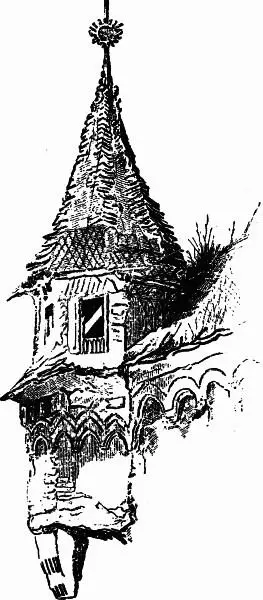
Fig. 8.
PLATE V.
The first tower of which we hear as built upon the earth, was certainly built in a species of aspiration; but I do not suppose that any one here will think it was a religious one. "Go to now. Let us build a tower whose top may reach unto heaven." From that day to this, whenever men have become skillful architects at all, there has been a tendency in them to build high; not in any religious feeling, but in mere exuberance of spirit and power—as they dance or sing—with a certain mingling of vanity—like the feeling in which a child builds a tower of cards; and, in nobler instances, with also a strong sense of, and delight in the majesty, height, and strength of the building itself, such as we have in that of a lofty tree or a peaked mountain. Add to this instinct the frequent necessity of points of elevation for watch-towers, or of points of offense, as in towers built on the ramparts of cities, and, finally, the need of elevations for the transmission of sound, as in the Turkish minaret and Christian belfry, and you have, I think, a sufficient explanation of the tower-building of the world in general. Look through your Bibles only, and collect the various expressions with reference to tower-building there, and you will have a very complete idea of the spirit in which it is for the most part undertaken. You begin with that of Babel; then you remember Gideon beating down the tower of Penuel, in order more completely to humble the pride of the men of the city; you remember the defense of the tower of Shechem against Abimelech, and the death of Abimelech by the casting of a stone from it by a woman's hand; you recollect the husbandman building a tower in his vineyard, and the beautiful expressions in Solomon's song,—"The tower of Lebanon, which looketh towards Damascus;" "I am a wall, and my breasts like towers;"—you recollect the Psalmist's expressions of love and delight, "Go ye round about Jerusalem; tell the towers thereof: mark ye well her bulwarks; consider her palaces, that ye may tell it to the generation following." You see in all these cases how completely the tower is a subject of human pride, or delight, or defense, not in any wise associated with religious sentiment; the towers of Jerusalem being named in the same sentence, not with her temple, but with her bulwarks and palaces. And thus, when the tower is in reality connected with a place of worship, it was generally done to add to its magnificence, but not to add to its religious expression. And over the whole of the world, you have various species of elevated buildings, the Egyptian pyramid, the Indian and Chinese pagoda, the Turkish minaret, and the Christian belfry,—all of them raised either to make a show from a distance, or to cry from, or swing bells in, or hang them round, or for some other very human reason. Thus, when the good people of Beauvais were building their cathedral, that of Amiens, then just completed, had excited the admiration of all France; and the people of Beauvais, in their jealousy and determination to beat the people of Amiens, set to work to build a tower to their own cathedral as high as they possibly could. They built it so high that it tumbled down, and they were never able to finish their cathedral at all—it stands a wreck to this day. But you will not, I should think, imagine this to have been done in heavenward aspiration. Mind, however, I don't blame the people of Beauvais, except for their bad building. I think their desire to beat the citizens of Amiens a most amiable weakness, and only wish I could see the citizens of Edinburgh and Glasgow inflamed with the same emulation, building Gothic towers 7instead of manufactory chimneys. Only do not confound a feeling which, though healthy and right, may be nearly analogous to that in which you play a cricket-match, with any feeling allied to your hope of heaven.
Читать дальшеИнтервал:
Закладка:
Похожие книги на «Lectures on Architecture and Painting, Delivered at Edinburgh in November 1853»
Представляем Вашему вниманию похожие книги на «Lectures on Architecture and Painting, Delivered at Edinburgh in November 1853» списком для выбора. Мы отобрали схожую по названию и смыслу литературу в надежде предоставить читателям больше вариантов отыскать новые, интересные, ещё непрочитанные произведения.
Обсуждение, отзывы о книге «Lectures on Architecture and Painting, Delivered at Edinburgh in November 1853» и просто собственные мнения читателей. Оставьте ваши комментарии, напишите, что Вы думаете о произведении, его смысле или главных героях. Укажите что конкретно понравилось, а что нет, и почему Вы так считаете.
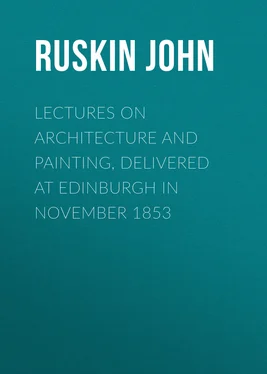

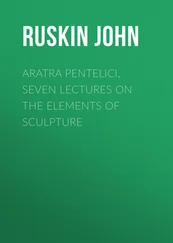

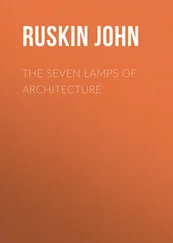
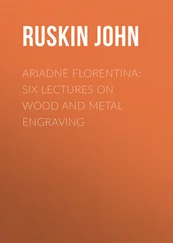





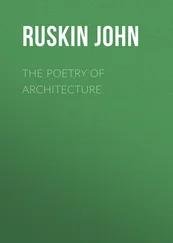
![John Bruce - The Lettsomian Lectures on Diseases and Disorders of the Heart and Arteries in Middle and Advanced Life [1900-1901]](/books/749387/john-bruce-the-lettsomian-lectures-on-diseases-and-disorders-of-the-heart-and-arteries-in-middle-and-advanced-life-1900-1901-thumb.webp)